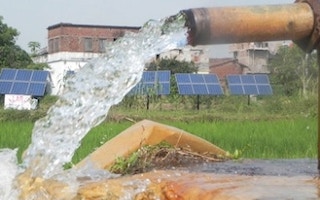When twenty-nine-year-old Kartik Wahi graduated from the Kellogg School of Management in Chicago, Illinois in 2010, he wasted no time in returning to India to self-finance a start-up company to market solar-powered irrigation pumps.
Working on a shoestring budget together with two partners, the young entrepreneur was convinced that the benefits of this renewable energy initiative would make a huge difference in some of India’s largest agricultural regions.
But few others shared his enthusiasm for innovation, and three years down the line a myriad obstacles still stand in the way of the pumps being widely deployed in states like Rajasthan, located in the northwest, and Bihar, which sits on India’s northeastern border.
Solar-powered pumps run on electricity generated by photovoltaics and “have been around for 20 years in India,” according to Tushaar Shah, who leads a policy research partnership between the Colombo-based International Water Management Institute (IWMI) and Sir Ratan Tata Trust, called the IWMI-TATA Programme (ITP).
Still, only 7,000 such pumps are used throughout this country of 1.2 billion people.
Click here to read the full story.










